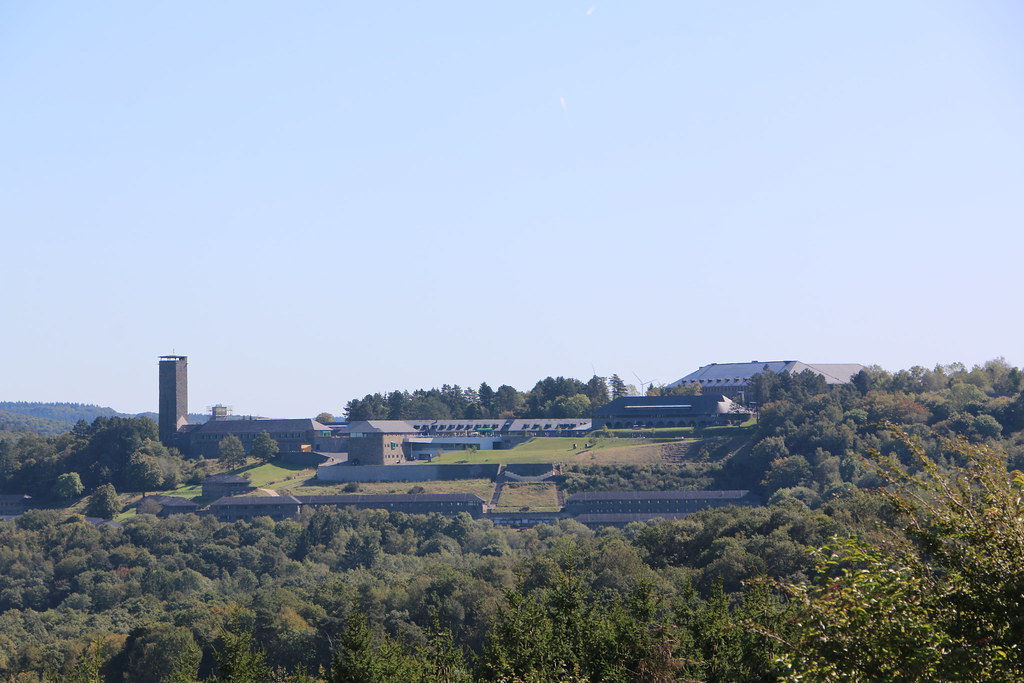#Vogelsang
Text
#fürgüllesindwirzuständig#meixnergülletechnikihrseparatordienstleister#gülletechnik#bsaistblau#atackemitderkacke#fanseparator#bsapumptankwagen#fendfahrerarmy#gülleballern#güllebomber#jedesfasseinbomech#lohner#lohnerausleidenschaft#lohnunternehmerausleidenschaft#streisal#vogelsang#bomech#biogasfachverband#biogas#blauistschöner#bsagmbh#separators#Separator#schlauchpumpe#fürjedesfasseinbomech
2 notes
·
View notes
Text
New Food Waste Grinder to optimize Pumping Throughput


Focused on improving the waste-handling capabilities of the food industry, animal processing, and related waste-handling facilities, Vogelsang USA is bringing its largest format grinding system, the RedUnit XRL260.
Nicknamed “Big Red,” Vogelsang’s largest hopper-fed grinder to date is designed specifically to reduce large quantities of solid waste material quickly. The RedUnit XRL260 features two 50hp geared motors capable of handling up to 130 cubic yards of solid waste per hour (100 m3/h). The 5’ x 2’ inlet handles whole hogs and higher volumes of waste material. Existing installations have been able to increase throughput by 50-100% while reducing power consumption by as much as 50-60%.
Notable installations have been:
- Rendering plants: handling hogs, calves, and poultry – increased throughput by as much as 100%
- Biowaste, Process, and Post-Consumer: This includes organic waste, scraps, pits, and tops, as well as post-consumer waste with metal and plastic—50% energy savings compared to a hammermill.
- Slaughterhouse: bones innards, offal, skulls – lowered energy costs by 60%, increased protein output
- Pet Food: handled pallet-sized frozen blocks of animal waste – increased throughput by 100%, easy feeding improved operations.
Among the most notable features of the XRL260 is its side-entry maintenance design, specifically engineered to provide quick and safe access to the grinder's cutting elements. A “side flap” is easily opened to remove foreign objects, typically allowing one person to dismantle the one-piece cutting rotors. This ensures maximum uptime and quick, cost-effective maintenance.
Operational features:
- Lateral service hatches provide direct access to rotors to streamline maintenance and allow the easy removal of foreign bodies.
- Elimination of elaborate clearing systems
- Independent rotor direction and speed to adjust to any type of materials
Part of the new service concept from Vogelsang:
- Side panels easily lift up for removal of foreign bodies and maintenance.
- Direct access to rotors with maintenance that can be done by only one person if necessary.
- Ripper rotors can be easily removed for quick cleaning, ultimately extending the lifetime value of the machine
https://news.vogelsang.info/en/redunit-xrl-260
Read the full article
0 notes
Photo
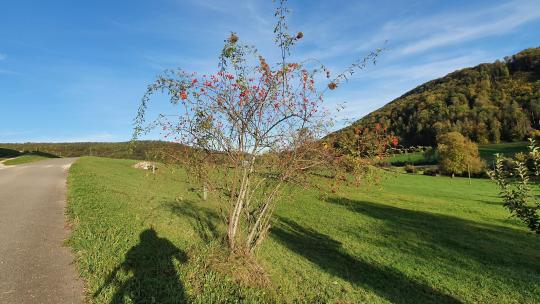
Sonntagsrunde Vollständiger Bericht bei: https://agu.li/28m Auf der Suche nach herbstlichen Farbtönen. Das GPS registrierte 36.9 KM und 372 Höhenmeter.
#Aaretal#Aargau#Brugg AG#Bürensteig#Herbst#Mönthal#Radweg#Remigen#Riniken#Schweiz#Siggenthal Station#Turgi#Ueberthal#Umiken#Untersiggenthal#Villigen#Villigerfeld#Vogelsang#Wasserschloss#Würenlingen
0 notes
Photo

#Langeoog ist eine der #Nordseeinseln vor der Küste #Deutschlands. Sie ist eine der sieben bewohnten deutschen #Ostfriesischen #Inseln und die einzige im #Nationalpark #Wattenmeer. Die Insel ist etwa 13 Kilometer lang und 3,5 Kilometer breit und hat etwa 2.700 Einwohner. Langeoogs erste Bewohner waren im 13. Jahrhundert friesische Fischer. Seitdem ist die Insel vor allem für deutsche Urlauber ein beliebtes #Touristenziel. Die Hauptattraktionen der Insel sind ihre Sandstrände, ihre malerische Dorfatmosphäre und ihre natürliche Schönheit. Langeoog ist auch ein beliebtes Ziel für #Vogelbeobachter, da hier eine große #Eiderentenkolonie beheimatet ist. Die Insel ist auch die Heimat einer Reihe von #Robbenbabys, die man oft beim #Sonnen an den Stränden beobachten kann. #Langeoog #Möve #vogel #vogelfotografie #vogelperspektive #vogelsberg #vogelsang #vogelgezwitscher #vogelspotten #vogelbad APSC f20-/1/3200s-iso3200-100mm (hier: Langeoog) https://www.instagram.com/p/Co_osM7tvjN/?igshid=NGJjMDIxMWI=
#langeoog#nordseeinseln#deutschlands#ostfriesischen#inseln#nationalpark#wattenmeer#touristenziel#vogelbeobachter#eiderentenkolonie#robbenbabys#sonnen#möve#vogel#vogelfotografie#vogelperspektive#vogelsberg#vogelsang#vogelgezwitscher#vogelspotten#vogelbad
0 notes
Photo

Nazi-Architektur (Kinosaal Ordensburg #Vogelsang) (hier: Ordensburg Vogelsang) https://www.instagram.com/p/Cd6B4zKDjNT/?igshid=NGJjMDIxMWI=
0 notes
Text

May your soul live, achieving millions of years, you who love Thebes, sitting with your face to the north wind, your eyes beholding happiness - inscription on the "wishing cup" lotus chalice, the first object encountered inside the antechamber of KV62
#happy belated 100th rediscovery anniversary king#aight so everything is based on objects from the tomb#thats The Duck Tunic#its number is 050a#it is adult sized#going on vogelsang-eastwoods colour reconstruction (its faded over 3300 yrs)#duckie sandals 021f and g based on veldmeijers reconstruction they are also adult sized#diadem and meteroric iron dagger and flexible inlaid apron were all found on his mummy#ring on his left hand is the kneeling king presenting maat one which was found on that finger of his mummy#holding the lotus chalice obvs#staff is based on the ones the guardian statues have#sash is based on 100f an Amarna style belt#openwork belt buckle (alleged) whose number i dont remember#bracelets were found on his mummy#no wig was found in the tomb so its based on his depiction on the golden throne#shebiu collar and broad collar also from the tomb and the shebiu is the correct colours i tried to make the collar correct too#anyway u get the idea#ancient egypt#my art#tutankhamun#archaeology#described in alt text#oh and the hieros say the good god nebkheperure the son of ra tutankhamun#given life forever
1K notes
·
View notes
Text
Lycanthropy and the Body in Medieval Europe
Sourced from: Riddarvold, Stian (2023): Medieval perceptions of the Other in an extranormal community: The Case of Cornelius Vogelsang. Journal of Lycanthropic History, 2(3).
The perception of Monstrosity and Otherness in Medieval Europe has been analyzed in literature from the Icelandic sagas (Merkelbach, 2014) to Beowolf (Fahey, 2019; Cavell, 2014). [...] The Army of the Night (Exercitus noctis) is not documented well, many documents being destroyed upon its dissolution in the 1300s. Despite this, there has been a recent uptick in research about this unique military and social structure. Exclusively consisting of lycanthropes, it was still largely governed by medieval perceptions of monstrousness contingent with human society. This study will examine the norms surrounding monstrosity and the body in a lycanthropic context and their enforcement through the documented court case against Cornelius Vogelsang. Additionally, interviews were conducted with three werewolves who witnessed the trial, which will be referred to as P, Z, and M.
The Army of the Night was a military unit founded and led by Emicho VI., also known as Emicho the Crusader (ca. 1050-2020), to aid the crusades. The Army of the Night is only scarcely documented in official church records, though Emicho appears frequently in the Gesta Francorum and Historia Francorum. He is described as a capable, if ruthless, military leader building a strike force apart from the main, i.e. human, crusaders. While the lycanthropic nature of that force is not named directly, Gesta Francorum indicates a level of disconnect between the fighting units, describing the Army of the Night as simply "strange" (prodigiosus). After the failure of the first crusade, there is a large hole in the documentation, with Emicho and his troops only appearing in fragments. For a more general overview see Vanderbilt, 1989.
Monstrosity and Monstrousness in the Army of the Night
In the Middle Ages, monstrousness was a metaphor as well as a real state inherently linked to the soul. Monstrousness as a whole was heavily confounded with race, disability, and marginalization in literature and was heavily linked to the body. It was assumed that wickedness or sin would show on the body, the damnation of the soul made flesh here and in the afterlife. Unlike in many Christian faiths today, the soul was not seen as separate from the body. The state of the soul was reflected on the body and vice versa. Another important component was the mind: Reasoning ability was assumed to be inherently human, while the monstrous only followed instincts. The damned were thus made monstrous by the rejection of their very existence as a thinking being.
In the period of the Army's assembly and operations, monstrousness was not seen as inherently damning, as in, it was reversible. Repentance could still save the soul.
As eldritch lycanthropes change on a molecular level, they were permanently made monstrous, and were thus damned by merely existing. However, the visible signs of lycanthropy progress with age, giving rise to the idea that there was a timeframe in which one could still reverse the process. (see document B26-3682)
[Fragment of latin text describing a transformation and the idea that there is a way to "save" a werewolf]
The timeframes vary between 30-100 years, which correlates with the lifespans of werewolves in the Army of the Night as estimated by my interview partners (transcripts in Appendix A-C).
Werewolf P was a high-ranking officer in the Army and worked closely with Emicho VI. In regard to the Army's concept of salvation, he stated:
"If they [the chosen recruits] survived the turning, they were brought into the camp. They were told it was a punishment for their sins - that it came directly from God instead of, hm, that they were just unlucky I suppose. [...] It was a sin to be a werewolf, and you became a werewolf by sinning, so unless you were saved before the beast took over completely, you would be damned forever. Of course people figured out that it was Emicho and his officers who were turning people, but the fear kept them in line. Turning someone without permission and hiding it was also punishable by death. Not that most lived very long. They thought dying for the cause could save them."
This idea was reinforced by a lycanthropic trait that has not been studied outside of folklore until the modern day. When dying, the body will take the shape that is most aligned with the phase of the moon. Calculating the moonphase for recorded battles shows that most were fought during half or new moon. A dying wolf would thus turn back to humanoid form and seemingly confirm that they had been saved. This of course was only true for wolves young enough to not show outward signs that a medieval person could pick up on. Once again, this reinforced the time pressure the recruits faced.
Burial, too, was contingent on their body's and thus soul's state.
[...]
The case of Cornelius Vogelsang
To show how monstrousness informed social relationships even within an extranormal community, I will now examine the court case against Cornelius Vogelsang, a member of the Army of the Night that was executed on the fifth of March 1218 on account of sodomy and heresy. What makes this case interesting is that it is the only one still preserved in some detail.
The person in question first appears as either Hussein ibn al-Rahmud or Hassan ibn al-Rahmad in the list of new recruits on the retreat after the disastrous loss at Hattin (1187). He was recorded to be 20 years old, which is not out of place in the Army of the Night. (See document A34-3442)
A supplementary interview with the werewolf Z confirmed that Vogelsang had likely grow up Muslim, but "he didn't like to speak of it". (Appendix B) The name Cornelius Vogelsang appears first in the Army's 1188 census alongside the older name. He seemed to have christianized his name in order to fit in with the Europeans. The appendix "Vogelsang" was apparently given in reference to his singing prowess. In between his recruitment and sentencing there is no surviving documentation of his existence or actions.
The trial commenced in early February 1218. The town cannot be identified conclusively due to damage to the parchment, but the record was found in the abbey of St. John in Alzey. While this abbey was only founded in 1290, it still points towards the trial taking place in the region.
Vogelsang was indicted on charges of heresy and sodomy. He was accused of preaching heresies to young recruits, such as lycanthropy not being a reversible curse, but a natural state of being. In a second charge he was also accused of sodomy with an unknown man that could not be identified in the course of the trial. Document A44-3448 describes the other person involved as "indictus" (unnamed), which implies that the identity was known, but the person was not to be charged.
[Scan and transcript of the page detaiing the court proceedings.]
Sodomy in this period was defined as any sexual act not intended for procreation. In the Army of the Night, this rule extended to all sexual activity, as siring children while monstrous was perceived as a major threat both theologically and realistically. This did not mean the werewolves did not seek out women, but by the decree of 1123, any offspring was to be killed as soon as possible. [...] The primary affront of homosexual acts was not its usually recreational nature, but the "perversion of natural law" of one person taking on the role of the opposite sex. (Hart, 1990) [...]
Vogelsang was described as a "large, blue man" with "shoulders like oxen and hands like shovels". Blue in this context refers to all darker colors and was often used in texts to also denote wickedness, possibly with a racialized undertone (Sigurdsdottír, 2018). The description of his strength also marks him as threatening. In the following paragraph, he is described as wearing his hair in the style of a woman, and his "beard [does] not hide his weakness". This description makes sense when connected with the accusations of an unknown witness, who claims to have found Vogelsang "subdued and taking the part of the woman", i.e. being the receiving partner.
Vogelsang was sentenced to death by burning, and his eyes were gouged out as to forbid him from seeing God's splendor. This sentence is notably brutal, as most other documented death sentences were either executed through beheading or a silver dagger to the heart. It is not too far-fetched to assume the sentence was meant to be a deterrent. The destruction of the body was a highly symbolic act. It proclaimed Vogelsang to be beyond salvation, thus he was considered to have lost his soul and the privilege of burial.
Assuming all accusations are true, Cornelius Vogelsang knew that the soldiers were being lied to, and tried to disprove or at least challenge the reigning narrative. With said narrative as his primary tool, Emicho had good reason to fear an erosion of his power.
Vogelsang's identity (in the modern sense) also made him vulnerable: While race was not conceptualized the way it is today, being Middle Eastern could have been a visible reminder of his status as a convert. Z, who described himself as a "half-gypsy", recounted several instances of prejudice because of his appearance being used to challenge his status as a Christian.
The last of my three interview partners, M, added a completely new and unknown perspective. According to him, while there certainly was "some political shit going on", the sodomy accusation had actually resulted from jealousy. The accuser had previously been rejected by Vogelsang, and the accusation had been revenge. (see Appendix C)
The only defending voice in the trial came from an unnamed officer, whose description has been erased, seemingly on purpose.
[Scan of a document that had an entire paragraph scratched out]
The remaining account merely states that he protested the sentence and was silenced by his superior, one Bishop Anghelescu. Despite the intervention, the officer was sentenced to whipping and being marked by claw, i.e. having a visible part of his body scarred. The nature of this punishment served to make his monstrousness - in this case supporting a sinner - physically apparent.
Monstrousness as a state of damnation-until-saved informed both the social structures of the Army and the identity of werewolves within the group. At the same time, these concepts were used by Emicho VI. and the Catholic church as a whole to enact control upon a highly organized and effective strike force. Monstrousness was tied to gender, sexuality, religion, and race. Deviations both voluntary and involuntary could be cause for punishment including death. The case Vogelsang illustrates this use of theology in the name of control and power, as enacted by Emicho VI.
#lycanthrope#werewolf#wolves against the world#worldbuilding#original character#academia#cornelius vogelsang#i rote this instead of my actual uni stuff
21 notes
·
View notes
Note
Totally hate to be a bother if there is already a post you’ve made about it, but I couldn’t seem to find any in the FAQ. I want to delve into writing historical fiction for Ancient Egypt eventually, as I’ve got an idea for a paranormal-romancey-esque story, and I want to make it as historically accurate as reasonably possible (since the protag is an Egyptologist herself). Do you have any advice for depicting it realistically/researching in particular areas or in any specific books? Thank you! :)
Nah no worries, I haven't answered anything like this specifically yet! So recommendations for historical accuracy and realistic depictions depend on a few things, the first of which is the time period of ancient Egypt your story deals with. I don't know if you've already made decisions about that, but the easiest Dynastic period to set it in would be the New Kingdom, since we have the most material from that time period. Any earlier than that and you have to deal with gaps in our knowledge, as well as a very different kind of Egypt from the image popular media paints (no horses or khepesh swords, for example).
There's a book I like to recommend for research into daily life specifically for fiction writing, which is Life of the Ancient Egyptians by Eugen Strouhal. It has a somewhat too optimistic tendency which borders on romanticising at points, but not in a way that would lead to awkward or harmful representations of the ancient Egyptians. Personally I think it's well-suited as a research work for fiction writers because it places emphasis on the good and human things. When you read it you get a good sense of ancient Egypt as the very verdant, very rich society it was, as opposed to the "dusty barren sand cities" image Hollywood likes to concoct. So in a sense, it takes the kind of liberties I'd like more writers writing about ancient Egypt to take.
Other than that, assuming you're wanting to write New Kingdom (though depending on whether you're writing about elite or non-elite), I'd see if you can pick up Andrea McDowell's Village Life in Ancient Egypt. It deals with the worker's village of Deir el-Medina and life there. Caveat: DeM isn't a "normal" Egyptian village but we do have a ton of information on it, and it isn't necessarily a bad thing to base any fictional villages on this one imo.
From a personal point of view, I can recommend writing about the Middle Kingdom, despite the relative lack of material. Wolfram Grajetzki has some excellent and accessible (some for free) overview works that deal with this period that will give you a solid base. The Egyptian Middle Kingdom, and Middle Kingdom Studies (various authors) are great.
No matter the time period, I'd supplement with Gillian Vogelsang-Eastwood's Pharaonic Egyptian Clothing for the all-important "what are these people even wearing" question. imo, that's a big one in terms of realism. The same goes for Steven Snape's The Complete Cities of Ancient Egypt.
Now, as for the realistic portrayal of an Egyptologist character, my one big tip would be: do. not. infodump.
I know that sounds like just bog standard advice for any genre of book, but in this case there's a second reason to avoid them: having your Egyptologist main character infodump is the way to mark them out as not an actual expert. Not because we never talk about ancient Egypt in real life (we do), but because we don't really talk to ourselves about Egypt in the way of a novel infodump. Absolutely have them explain something super specific to another character, whilst forgetting that the other character doesn't have the full context to understand most of what the fuck they're saying though, that's something we do all the time. Just don't infodump basic concepts, that's half the job done when it comes to realistic portrayals of Egyptologists.
And as always, my evergreen tip: do your research, and then take the liberties your narrative needs to make it the best version of your story (while keeping respect for the ancient Egyptians themselves in mind, but I don't think I need to tell you based on the way you asked this question).
Lastly, I can't technically make any promises considering my health/energy for the foreseeable future, but if there's anything you want me to proofread, feel free to ask!
#egyptology#writing#writing advice#forgot to mention: vogelsang's book is no longer for sale but i have a PDF I can link you!
99 notes
·
View notes
Text
#fanseparator#fürgüllesindwirzuständig#meixnergülletechnikihrseparatordienstleister#gülleballern#jedesfasseinbomech#gülletechnik#vogelsang#bsaistblau#streisal#bsagmbh
0 notes
Text
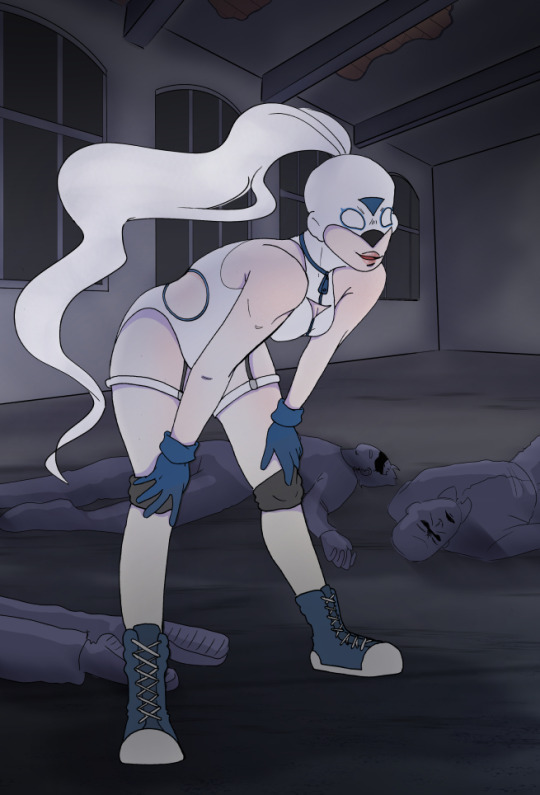
"I can do this all night!"
#original character#bellebird#oc art#superheroine#comics#superhero costume#costume#fighting#albinism#albino#cute#white hair#battle#my stuff#bell bird#character design#character art#character concept#original art#character illustration#birds#Vanessa Vogelsang#vivi#posing#posing practice#bend over#hands on knees#mask#masked hero#vigilante
3 notes
·
View notes
Photo
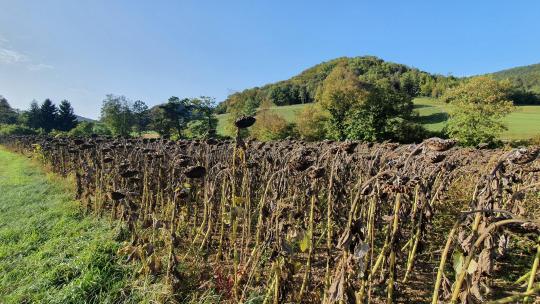
Aaretal und Villigerfeld Vollständiger Bericht bei: https://agu.li/28b Weiterhin sommerlicher Herbst, bei angenehmen Temperaturen und blauem Himmel. Das GPS registrierte 45 KM und 299 Höhenmeter.
#Aare#Aaretal#Aargau#Brugg AG#Döttingen#Herbst#Radweg#Remigen#Riniken#Rüfenach AG#Schweiz#Siggenthal Station#Turgi#Ueberthal#Umiken#Untersiggenthal#Villigen#Villigerfeld#Villnachern#Vogelsang#Wasserschloss#Würenlingen
0 notes
Photo
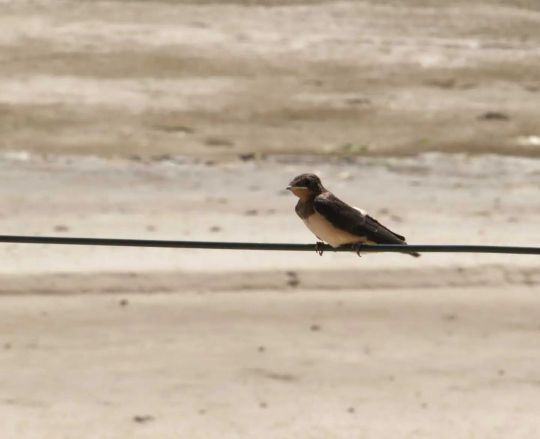
#Langeoog ist eine der #Nordseeinseln vor der Küste #Deutschlands. Sie ist eine der sieben bewohnten deutschen #Ostfriesischen #Inseln und die einzige im #Nationalpark #Wattenmeer. Die Insel ist etwa 13 Kilometer lang und 3,5 Kilometer breit und hat etwa 2.700 Einwohner. Langeoogs erste Bewohner waren im 13. Jahrhundert friesische Fischer. Seitdem ist die Insel vor allem für deutsche Urlauber ein beliebtes #Touristenziel. Die Hauptattraktionen der Insel sind ihre Sandstrände, ihre malerische Dorfatmosphäre und ihre natürliche Schönheit. Langeoog ist auch ein beliebtes Ziel für #Vogelbeobachter, da hier eine große #Eiderentenkolonie beheimatet ist. Die Insel ist auch die Heimat einer Reihe von #Robbenbabys, die man oft beim #Sonnen an den Stränden beobachten kann. #Langeoog #Rauchschwalbe #vogel #vogelfotografie #vogelperspektive #vogelsberg #vogelsang #vogelgezwitscher #vogelspotten #vogelbad APSC f40-/1/125s-iso800-300mm (hier: Langeoog) https://www.instagram.com/p/CotX3eGq4ar/?igshid=NGJjMDIxMWI=
#langeoog#nordseeinseln#deutschlands#ostfriesischen#inseln#nationalpark#wattenmeer#touristenziel#vogelbeobachter#eiderentenkolonie#robbenbabys#sonnen#rauchschwalbe#vogel#vogelfotografie#vogelperspektive#vogelsberg#vogelsang#vogelgezwitscher#vogelspotten#vogelbad
0 notes
Text

Karl Vogelsang - Passage. Blue-Yellow
4 notes
·
View notes
Text

HAPPINESS!
Ph Elke Vogelsang
7 notes
·
View notes
